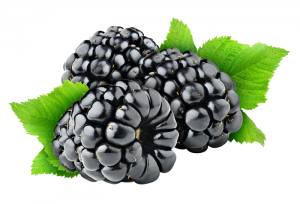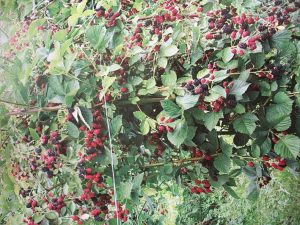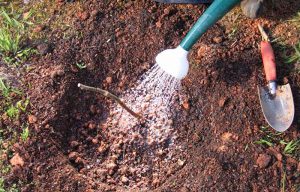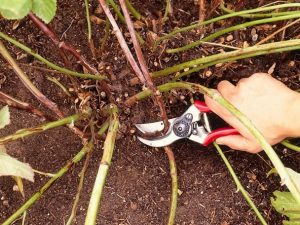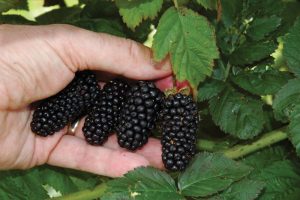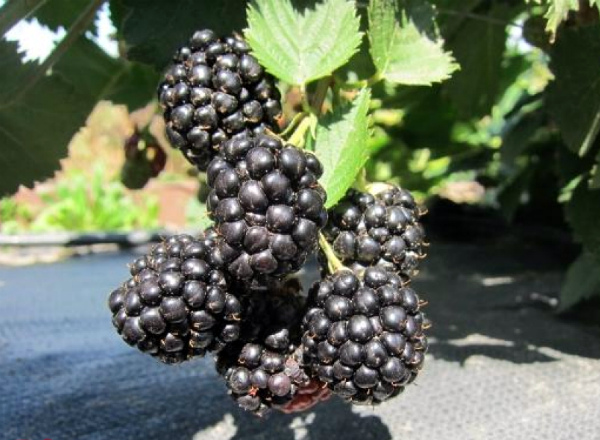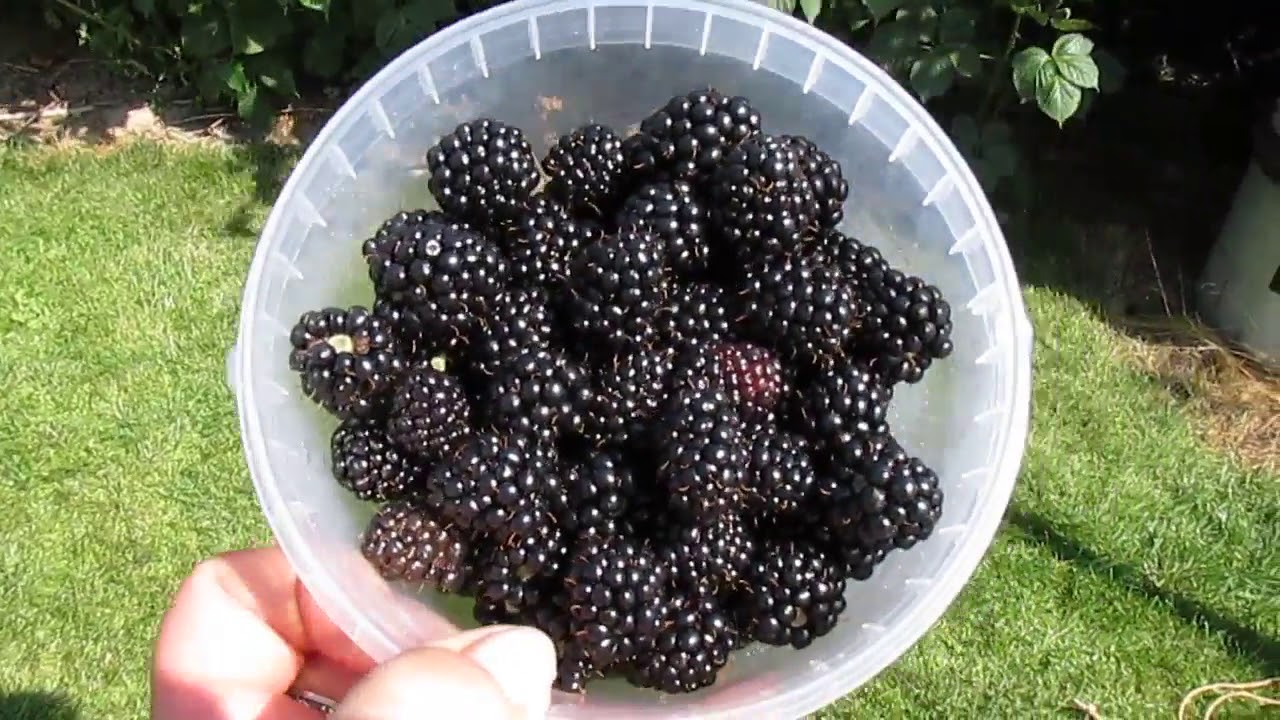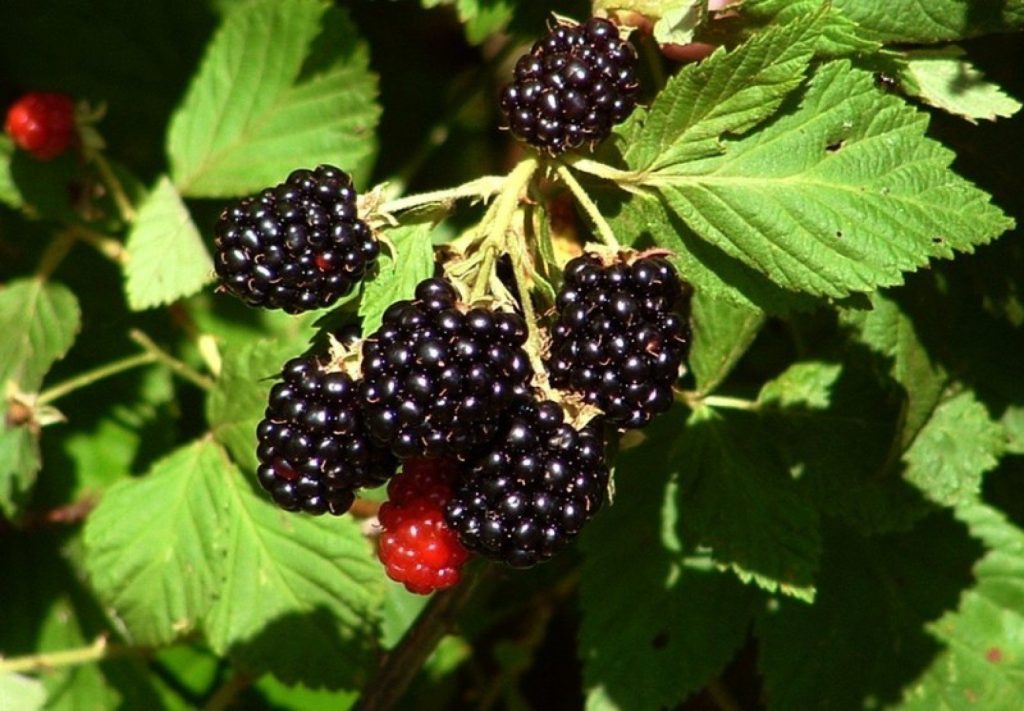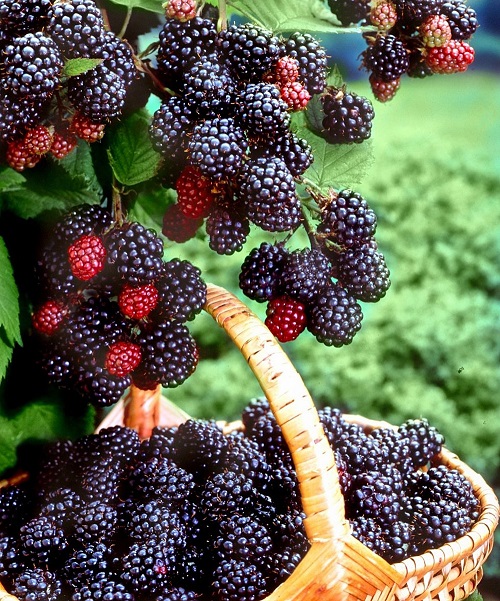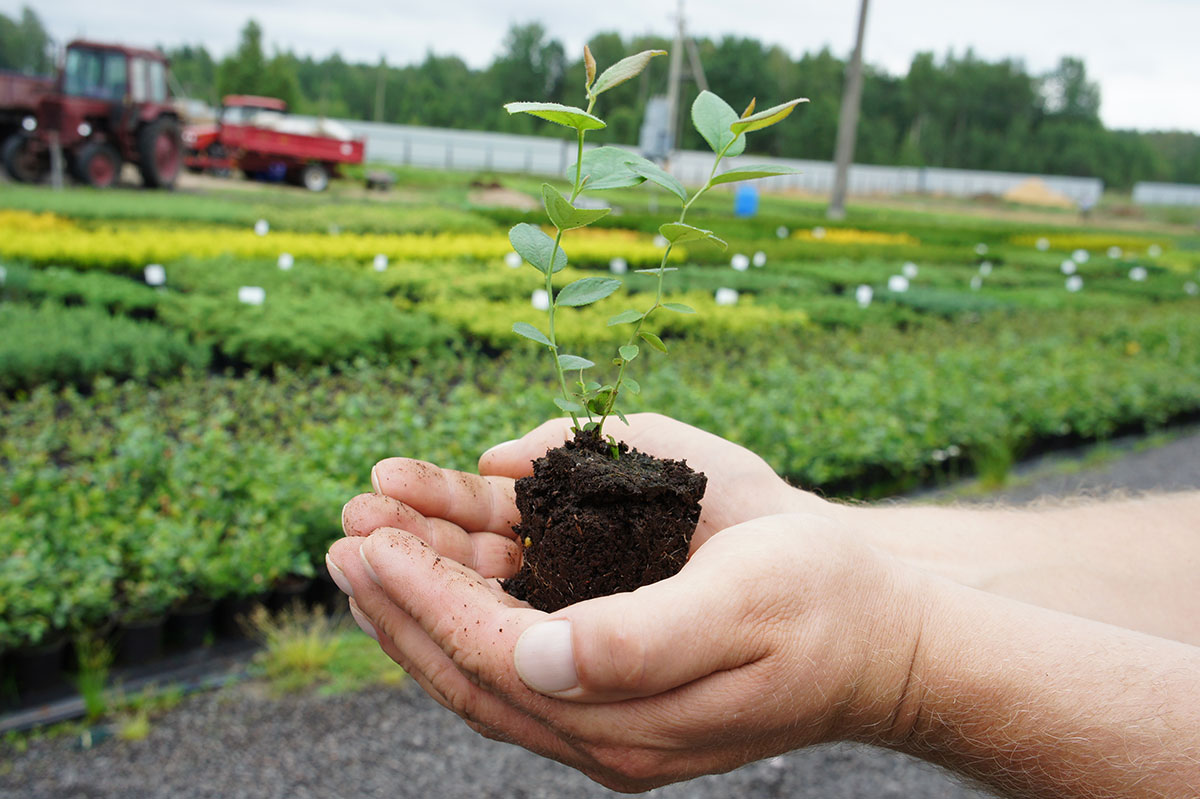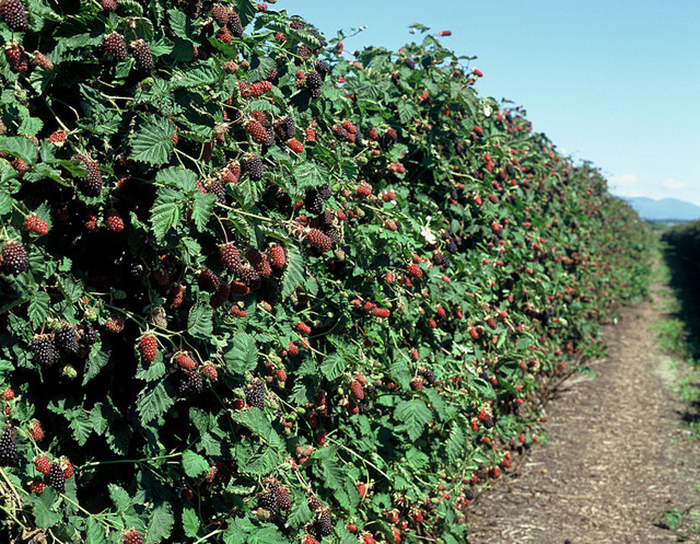Content:
Blackberry (English blackberry) is a subgenus of plants of the genus Rubus, the Pink family. On the territory of Russia, two varieties of this plant grow: bushy blackberries and gray blackberries. It can grow in forests and can be found in various regions: from the Arkhangelsk region to the Caucasus.
Another type of plant - garden blackberry, is planted in the conditions of personal plots. Blackberries as a berry seem not very attractive to many, because they are very inconvenient to collect - the thorns of wild blackberries complicate the process. But modern breeders have long been able to cope with this problem. As a result, a lot of blackberry varieties were bred: agave, arapaho, himalaya, thornless, darts, thornfri, triple, etc., which are shrubs without thorns with large fruits, which are a pleasure to collect.
Description and characteristics
Blackberry, regardless of the species, is a semi-shrub with numerous thorns, shoots and stems. The latter can be recumbent or raised. The difference lies in the fact that the creeping variety reproduces exclusively by root suckers, and the erect one - by rooting of the apical buds. In addition, erect blackberries give fruit relatively late, but the yield is quite high. The yield of a curly berry is even higher, since the berries are an order of magnitude larger.
The bush can grow up to one and a half meters in height. The plant has creeping rhizomes.
Terrestrial varieties can be of two types:
- vegetative annuals;
- generative biennials.
Annuals have curved shoots that can take root when in contact with soil.
When asked what a blackberry is, many people forget to mention that it is an incredibly healthy product. Its benefits are explained by the content in berries of a large amount of nutrients and vitamins:
- glucose;
- fructose;
- pectin substances;
- lemon acid;
- provitamin A;
- B vitamins;
- vitamin C;
- minerals.
Planting blackberries
Modern varieties of garden blackberries are mainly lianas with perennial rhizomes. This plant is not susceptible to diseases, resistant to most pests, and consistently bears fruit. The berries usually ripen in August. They taste somewhat sour than raspberries, but no other berry or fruit can boast of such amount of vitamin C, which is contained in blackberries (the only exception is the wild rose).
If you provide the garden blackberry with good support, it is capable of braiding everything that is possible, "climb" to a height of two meters. For this reason, some varieties of thornless garden blackberries are used for vertical landscaping in landscaping.
Note: there are erect varieties of berries, but their frost-resistant potential leaves much to be desired.
Planting blackberries is a rather responsible process, experts recommend starting it when spring is already in full swing and the earth has warmed up sufficiently. The Moscow region and the entire middle zone of Russia usually begin planting berries in April. In the northwest and in Siberia - a little later, in early May. Spring planting gives the plant the opportunity to have time to root well over the summer and prepare for the first wintering.
It is not recommended to plant a berry in autumn. The plant simply does not have time to take root and will die.
Important! Unlike wild blackberries, garden varieties tolerate frosts worse, and therefore the organization of wintering requires a special approach. If, for some reason, the seedlings were purchased in the fall, they should be placed in a burrow until spring.
A sunny place protected from all directions from the winds is optimal for landing. The fact is that the berries are pollinated by insects. Strong winds can interfere with the process.
A good soil option for planting is loam or sandy loam soil. If the soil contains a lot of calcium, the blackberry will need to be fed with magnesium and iron every year. The most suitable indicator of soil acidity for planting is 6.
Before planting, the site is preliminarily cleared of weeds and dug up. In parallel with the digging, humus or compost is added at the rate of at least 10 kilograms per 1 square meter. It is recommended to add a tablespoon of superphosphate to the wells themselves.
It is recommended to purchase a blackberry seedling in a reliable nursery. Otherwise, the risk of buying an ordinary berry, and not a modern large-fruited variety without thorns, is quite high.
Important! In no case should the thornless blackberry be propagated by roots, only by green cuttings, previously cut from young shoots. With root propagation, thorns will appear on the seedlings.
The choice of seedlings should be approached thoroughly. They must have a well-formed root system and buds on the rhizome. The aerial part of the plant should ideally consist of a pair of stems more than 5 mm thick.
The size of the planting hole depends on the size of the seedling. If the plant is not planted for vertical gardening, but as a berry crop, the plant should not be placed too close to buildings and other plants. The shrub grows rapidly.
Landing is possible in two main ways:
- bush;
- tape.
The belt method is usually chosen for growing vigorous blackberry varieties. The basic rule of landing in this case is the following: the distance between the belts should be at least 2 meters. The seedlings are placed in the furrows at 1 meter intervals.
The bush method involves planting several seedlings at the same time in one hole. Moreover, the pits themselves are placed at the corners of a square, each side of which is 2 meters.
The described methods of planting blackberries allow you to get a well-bearing berry. During the fruiting period, the berry culture enters very quickly. Subject to the listed planting rules, after a year you can become the owner of a fruiting blackberry plantation.
Blackberry care
Spring is the most crucial period in the process of caring for blackberries. It is slightly different from caring for other berries. Often, gardeners have to put in a lot of effort to keep the plant healthy and productive.
Mandatory care steps:
- Removal from winter shelter. The beginning of spring, when the snow is just melting and the temperature is above zero - it's time to remove the shelter.
- Mulching and loosening. In the spring, the moisture content of the soil is high and it is up to the grower to maintain it. For this purpose, the soil around the shrub is covered with a layer of mulch. In addition, it is required to thoroughly loosen the soil, simultaneously removing all weeds.
- Pruning. The time for pruning comes when the buds on the bush have not yet begun to swell. All frost-bitten, damaged and dry shoots are subject to removal.
- Pest and disease prevention. Almost any variety of blackberry is characterized by high resistance to most diseases, insects also do not cause much harm to the plant. However, preventive spraying with Bordeaux liquid is highly recommended at least once a year.
- Top dressing.Despite the fact that wild blackberries grow well even in poor soil conditions, garden varieties require mandatory feeding. The color, size and taste of berries will largely depend on its quality.
Keep in mind! Garden blackberries react negatively to organic matter. Therefore, nitrogen-containing products are better suited for feeding. Fertilizers should not be overused either - an excess of nitrogen can provoke excessive foliage, slow down the formation of ovaries and, accordingly, berries.
Preparing for winter
As you know, garden blackberry is not the most winter-hardy variety, therefore sufficient attention should be paid to preparation for winter. Even frost-resistant varieties are recommended to be sheltered for the cold season. As a covering material, you can use:
- corn leaves, additionally covered with polyethylene;
- sawdust;
- humus;
- branches of coniferous trees;
- hay;
- tops of vegetables;
- roofing material.
Important! It is not recommended to use the foliage of fruit trees as a material for covering blackberries. It provides an excellent wintering environment for dangerous pests.
Differences between blackberries and black raspberries
The differences between black raspberries and blackberries are significant. Despite the similarity in color, these are completely different berries. You can determine belonging to the first or second by the following important criteria:
- structure of berries;
- the shape of the berries;
- bush shape;
- the appearance of the bush;
- flowering time;
- ripening time of the crop.
The difference in the appearance of the berries is not conspicuous, which is why in most cases confusion occurs. But the black color of the fruit and the presence of single-seeded drupes are the only common characteristics. Blackberries are more elongated and shine in sunlight. The flesh of the berry is denser than that of the raspberry, and it is easier to transport.
You do not need a description of the garden blackberry variety to distinguish a plant from a black raspberry by a bush. Blackberry plantings are quite dense, and the bushes themselves are tall due to long shoots. Raspberries grow much more freely, their bush is lower.
Both plants have one thing in common: they rarely suffer from spring frosts. But if the flowering of raspberries begins in early June, then in blackberries the vegetative process begins only towards the end of the month. Accordingly, the time to harvest the berry also comes later.
Interesting! Breeders have created an amazing hybrid - ezhemalin, which combines the external and flavor characteristics of both berries.
Blackberry varieties
There are a huge number of varieties of blackberries:
- blackberry darrow,
- thornless evergreen,
- Natchez,
- renovation,
- goof tei,
- ruben,
- karaka black,
- goof ness,
- navajo,
- Brzezina,
- polar,
- cumberland,
- chachanska bestrna,
- asterina,
- orcan,
- guy,
- confusion,
- osage,
- darts black cascade,
- goof mery,
- black Prince,
- black beat
- black magic,
- kiova,
- arapaho,
- Himalayas,
- black diamond,
- Cherokee,
- ebony,
- Prime Arc Freedom,
- jumbo,
- columbia is old,
- ouachita,
- Helen,
- sorceress,
- beefgize,
- bestberry,
- black,
- apaches,
- crown,
- El Dorado,
- kitatini,
- thornless merton,
- doyle,
- giant,
- and many others.
Let's consider in more detail the most popular of the varieties.
Tayberry variety
The Tayberry variety is not really a blackberry, but a jemalina. It is characterized by red, close to cherry, fruit color, elongated shape of berries, pleasant taste and aroma. The bush itself is decorative. An unripe berry has a white color, which, as it ripens, changes to yellow and so on to dark cherry. Fruit weight - from 4 to 6.5 grams. The berries of this variety have a traditional blackberry sheen like satin. The juiciness and density of the fruits are moderate.
Agavam variety
It is a golden upright blackberry, an upright shrub that can vary in height from 1.8 to 3 meters. The leaf is rather complex, has a stud along the veins. Agave blooms with large white flowers, collected in racemose inflorescences. Abundant fruiting. The berries are medium in size (3-4 grams) and glossy black. The variety is extremely hardy and can bear fruit for up to 15 years.Drought tolerant, but grows well in wet soil.
Chester Thornless
The name of the Thornless variety is known to many gardeners. It is often planted for commercial purposes due to its high yield. The variety has tall and flexible shoots that can reach three meters in height. The stems of the plant are flexible, semi-sheathing, branching well. This thornless variety belongs to the late ones. Fruits ripen in autumn.
The berries are blue-black, large (up to 8 g), glossy. You can harvest at least 20 kg of excellent blackberries from one bush with proper care. The fruits tolerate transportation well due to their dense pulp.
Thornfree variety
Thornfree was so named because of the lack of thorns. This is a late-ripening dessert blackberry growing on a powerful semi-creeping bush. Fruiting begins in the second year. The leaves are large, dark green. The berries are black, large, oval in shape with large drupes and very weak pubescence. Retains gloss until maturity, then matte. The taste is sweet, with a slight sourness.
In our country, blackberries are not a priority berry crop for gardeners, but the popularity and demand for plants is growing every year. In many ways, this is facilitated by the abundance of varieties, among which you can easily find the one that suits the best.
